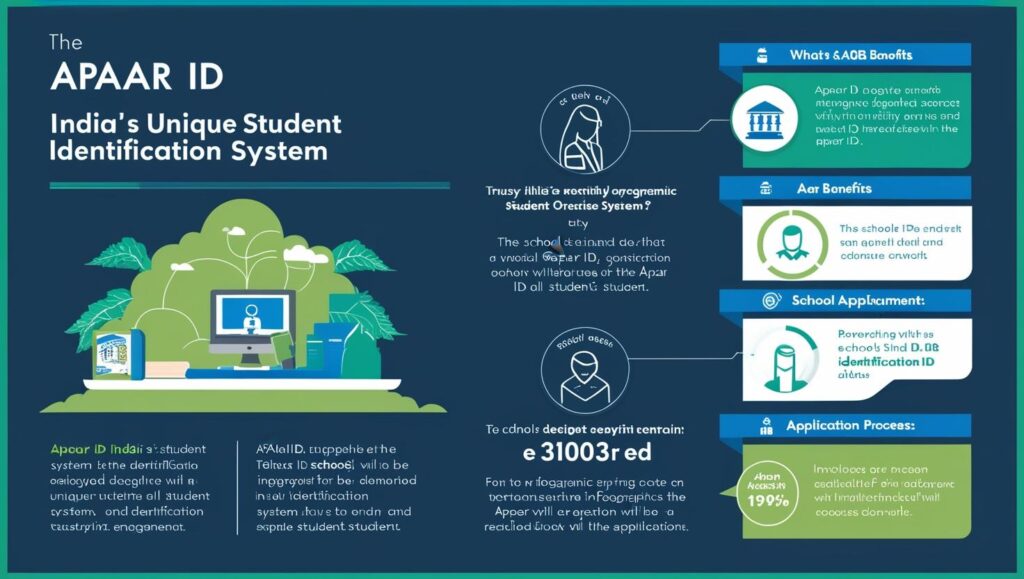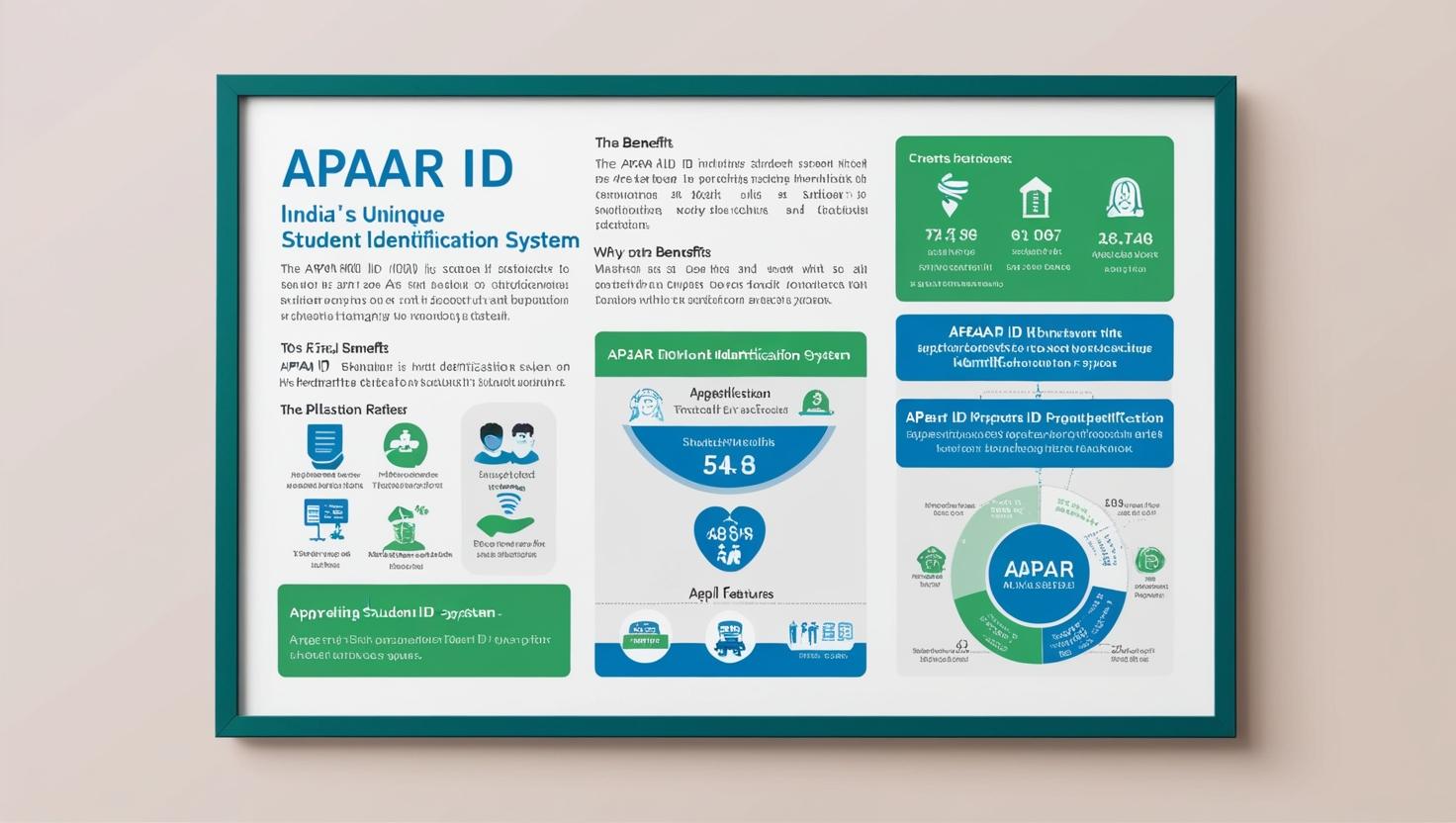The Automated Permanent Academic Account Registry (APAAR) is a groundbreaking initiative by the Indian Government designed to streamline educational records and ensure seamless academic tracking. Under the “One Nation, One Student ID” program, APAAR assigns a unique 12-digit identification number to each student, ensuring continuity and accessibility of academic data across institutions.
Why APAAR ID Matters
- Unified Academic Tracking:
APAAR provides a centralized system to monitor a student’s academic journey from primary education through higher studies. This initiative is particularly useful for preventing data loss when students transfer between schools or districts. - Data Integration with DigiLocker:
The APAAR system integrates with DigiLocker, a government platform for storing digital documents securely. Students can easily access their academic records, certificates, and holistic performance reports anytime. - Facilitates Educational Mobility:
Whether students move to a new state or change schools, the APAAR ID ensures that their academic history remains intact. This eliminates bureaucratic hurdles and improves the transition process for both students and schools. - Enhanced Data Accuracy:
Schools are required to authenticate student information meticulously before issuing an APAAR ID. This ensures accuracy in national educational databases, leading to better policymaking and resource allocation.

How APAAR Benefits Students and Schools
- For Students:
APAAR empowers students with control over their academic records, allowing them to share verified credentials with educational institutions or employers seamlessly. It also supports flexibility in education, accommodating diverse learning pathways as per the National Education Policy 2020. - For Schools:
By adopting APAAR, schools can streamline record-keeping, track student performance efficiently, and contribute to a national repository of educational data.
Also Read: MPPSC Recruitment 2025: Apply Online, Vacancies, Detail Process, Check Now
Steps to Generate an APAAR ID
- Data Collection:
Schools collect and verify student demographic and academic information. - Consent Process:
For minors, parental or guardian consent is required to proceed with the ID generation. - Submission and Verification:
Verified data is uploaded to the APAAR portal, where unique IDs are generated. - Integration:
The APAAR ID is linked to the student’s DigiLocker account, making academic records easily accessible.
Technological Framework
The APAAR system uses advanced digital infrastructure to ensure data security, scalability, and accessibility. It is integrated with India’s education portals such as UDISE+ (Unified District Information System for Education) and DigiLocker for seamless data synchronization.
Key Objectives of APAAR ID
- Inclusivity in Education: APAAR aims to bring marginalized and underserved communities into the formal education system by ensuring their records are maintained uniformly.
- Data-Driven Insights: The system provides real-time insights into enrollment, attendance, and academic performance, which aids policymakers in addressing gaps in the education system.
- Simplified Record Management: Schools and educational institutions no longer need to maintain physical records, reducing administrative burdens and errors.
National Education Policy (NEP) 2020 Alignment
The APAAR initiative aligns closely with the NEP 2020, which emphasizes digital learning, inclusion, and lifelong education. By offering a digital identity to every student, APAAR supports flexible and personalized learning pathways.
Future Prospects of APAAR
As India moves toward digital transformation, the APAAR system is poised to become the backbone of the education sector. It will facilitate a data-driven approach to policymaking, enabling governments to design targeted interventions for improving education quality.
In essence, APAAR is more than just a number—it’s a symbol of India’s commitment to accessible, inclusive, and equitable education. With its implementation, the dream of a truly integrated educational ecosystem is one step closer to reality.
Frequently Asked Questions (FAQ) about APAAR ID
1. What is APAAR ID?
APAAR (Automated Permanent Academic Account Registry) ID is a unique 12-digit identification number assigned to every student in India to maintain a digital record of their academic journey.
2. Who is eligible to get an APAAR ID?
All students enrolled in schools affiliated with government-recognized boards and institutions in India are eligible for an APAAR ID.
3. How can I apply for an APAAR ID?
Students do not need to apply directly. Schools are responsible for collecting and verifying student data, after which APAAR IDs are generated through the official portal.
4. What documents are required for APAAR ID creation?
The following documents are typically needed:
- Birth certificate or age proof
- Previous academic records (if applicable)
- Parental consent for minors
- Aadhaar card (if available)
5. Is the APAAR ID linked to Aadhaar?
While not mandatory, linking with Aadhaar ensures additional verification and facilitates integration with other government services.
6. How can I access my APAAR ID and records?
Students can access their APAAR ID and academic records via their DigiLocker account. Schools will guide students on linking their ID with DigiLocker.
7. What happens if I lose my APAAR ID?
You cannot “lose” an APAAR ID since it is a digital identity. You can retrieve it from the APAAR portal or your DigiLocker account.
8. Can I update my details in the APAAR system?
Yes, updates are allowed. Schools must submit verified changes to the APAAR portal for corrections or updates.
9. Is APAAR ID mandatory for students?
Currently, APAAR is being implemented gradually and may become mandatory nationwide. It is recommended for schools and students to adopt the system to avoid future disruptions.
10. How does APAAR ID ensure data privacy?
The system uses advanced encryption and secure authentication protocols. Data access is restricted to authorized entities, ensuring student privacy.
11. Does APAAR ID have any fees?
No, the APAAR ID is issued free of charge as part of the government’s initiative to enhance education accessibility.
12. Can homeschoolers or students outside traditional schools get an APAAR ID?
The government is working on mechanisms to include non-traditional learners, such as homeschoolers, in the APAAR system.
13. How will APAAR help in higher education or employment?
The APAAR ID simplifies sharing of verified academic records, making it easier for students to apply to colleges or jobs without needing physical certificates.










